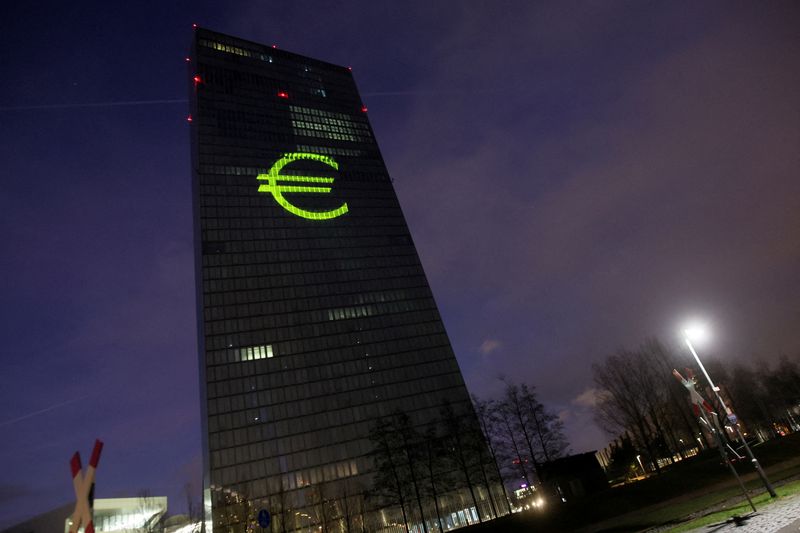Intel stock spikes after report of possible US government stake
Investing.com -- The European Central Bank (ECB) has managed to align inflation with its 2% target, but the outlook remains uncertain amid ongoing fluctuations in foreign exchange and commodity markets, according to Governing Council member Gediminas Simkus, Bloomberg reported on Tuesday.
Simkus, who also leads Lithuania’s central bank, warned that the recent surge in the euro’s value against the dollar and fluctuations in energy prices, fueled in part by tensions in the Middle East, could lead inflation to stray from the ECB’s target.
He noted that there’s currently a greater chance of inflation falling short rather than exceeding the 2% goal.
According to a Bloomberg survey of economists and Eurostat data, inflation in the euro area likely edged higher in June.
Despite this, Simkus emphasized that the inflation outlook remains fragile. Speaking on the sidelines of the ECB’s annual gathering in Sintra, Portugal, he cautioned that there’s uncertainty about whether current projections will hold up.
Although inflation is currently hovering around the 2% mark and ECB forecasts suggest it will remain stable through 2027 (after briefly dipping below that level next year), officials are grappling with persistent uncertainty.
This stems from ongoing geopolitical instability and aggressive trade policies from the U.S. President Donald Trump, which are weighing on investor confidence in the dollar.
As a result, the euro has appreciated rapidly, a trend that could reduce import costs while hurting the region’s export competitiveness, both of which could exert downward pressure on prices.
Simkus flagged the unusual pace of the euro’s rise, stating that while the exchange rate isn’t historically extreme, the speed of the change warrants attention.
With interest rates now considered neutral, neither stimulating nor slowing growth, Simkus said a rate pause at the ECB’s July meeting is the most probable outcome.
This aligns with economists’ expectations that the ECB will deliver one final rate cut in September, following eight reductions since June 2024.
Another major source of uncertainty is the trade relationship between the EU and the U.S., with negotiations underway ahead of a July 9 deadline.
Simkus warned that even though Europe has shown resilience so far, most of the economic impact from existing U.S. tariffs, currently at 10% for many European goods, has yet to be fully felt.
